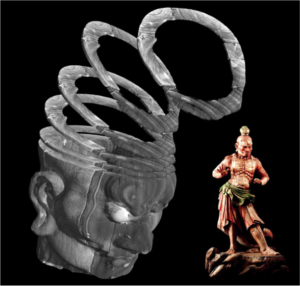PageContent
CHNet-Bologna
Local Coordinator : Maria Pia Morigi
Local Group: Bettuzzi Matteo, Brancaccio Rosa, M. Seracini
INFN-CHNet (Cultural Heritage Network) is the network of the Institute’s devoted to Cultural Heritage and was created to harmonize and enhance the expertise of the INFN in the development and application of analytical techniques for the study and diagnostics of Cultural Heritage, expertise distributed among many structures spread over the whole Italian territory, including those of the Bologna Section.
In particular, the CHNet group of the Bologna section has over twenty years of experience in development and application – in situ and not – of innovative systems for Digital Radiography and 3D Computerized Tomography. These non-destructive and non-invasive X-ray imaging techniques investigate the entire volume of the works of art and the archaeological findings, revealing crucial information such as construction techniques, the state of conservation and the constituent materials of these precious objects.
Over the years, several fruitful collaborations have been launched, such as the creation of a tomographic set-up at the Getty Institute of Los Angeles (US), the tomography investigation of a Japanese wooden statue at the Conservation and Restoration Center La Venaria Reale (Turin), the analysis of a 2mt diameter globe at Palazzo Vecchio in Florence and the more recent investigation of a globe by Vincenzo Coronelli at the Marciana Library in Venice.

The expertise of the research group range from the setup of the hardware components to the development of the software for the acquisition and reconstruction of tomographic data. In particular, different instruments, both fixed and mobile, have been developed and are currently available to carry out radiographic and tomographic investigations on a wide range of objects, from a few millimeters objects with a spatial resolution of a few microns to objects up to 2mt with a spatial resolution of a few hundred microns.
Collaborations:
- Getty Institute, Los Angeles
- Marciana Library, Venice
- Higher Institute for Conservation and Restoration (ISCR), Rome
- Archaeological Museum of Bologna
Recent publications:
- Spani, F., Morigi, M. P., Bettuzzi, M., Scalici, M., & Carosi, M. (2020). A 3D journey on virtual surfaces and inner structure of ossa genitalia in Primates by means of a non-invasive imaging tool. Plos one, 15(1), e0228131.
- Albertin, F., Bettuzzi, M., Brancaccio, R., Morigi, M. P., & Casali, F. (2019). X-Ray Computed Tomography In Situ: An Opportunity for Museums and Restoration Laboratories. Heritage, 2(3), 2028-2038.
- Bettuzzi, M., Morigi, M. P., Brancaccio, R., Peccenini, E., & Casali, F. (2017). A mobile computed tomography system for on-site cultural heritage analysis. In 2017 IEEE International Conference on Environment and Electrical Engineering and 2017 IEEE Industrial and Commercial Power Systems Europe (EEEIC/I&CPS Europe) (pp. 1-6). IEEE.
- Albertin, F., Romito, M., Peccenini, E., Bettuzzi, M., Brancaccio, R., Morigi, M. P., del Rio, M.; Raines, D.; Margaritondo, G, & Psaltis, D. (2017). From closed testaments to books: Virtual X-ray reading as an alternate digitization technology for fragile documents. In Archiving Conference (Vol. 2017, No. 1, pp. 14-18). Society for Imaging Science and Technology.












